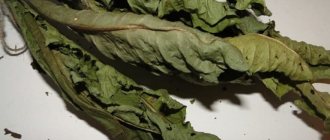- Wild animals
- >>
- Other animals
Octopus is a well-known cephalopod, distributed in almost all seas and oceans. These amazing animals can take on different shapes and colors, camouflaging themselves with their surroundings. Octopuses are valued among people due to their taste, which is why today there are entire farms for breeding these animals.
Origin of the species and description
Photo: Octopus
Octopuses (aka octopuses) are the most common representatives of the cephalopod order. Theutologists, scientists who study octopuses, distinguish two main orders that differ in their way of life: benthic and nomadic. For the most part, octopuses are bottom-dwelling creatures.
The body of an octopus consists entirely of soft tissue, therefore, in terms of paleontology, research on the origin of octopuses is difficult - after death, they immediately decompose, leaving no traces in the layer. However, European paleontologists discovered the remains of an octopus imprinted in the once soft soil rocks in Lebanon.
Video: Octopus
These traces were left approximately 95 million years ago. The remains of these octopuses are in no way different from modern octopuses - the prints were accurate, right down to the structure of the stomach. There are also other types of fossil octopuses, but the sensational discovery revealed that octopuses have not changed over millions of years of existence.
The following representatives also belong to the order of cephalopods:
- nautiluses;
- cuttlefish;
- squid.
Interesting fact: Squids are the largest representatives of cephalopods. In 2007, a female colossal squid was caught that weighed about 500 kg.
The name “cephalopod” was not obtained by chance: several (usually eight) tentacle limbs grow from the head of a representative of the order. It is also common that cephalopods do not have chitinous shells or have a very thin chitinous coating, which in no way protects them from external influences.
Appearance and features
Photo: Giant octopus
Octopuses are made entirely of soft tissue. Its “head” has an oval shape, from which eight movable tentacles grow. The mouth with jaws that resemble the beak of a bird is located at the point where all the tentacles converge - the octopuses grab the victim and pull it into its center. The anus is located under the mantle, a leathery sac behind the squid.
The octopus's pharynx is ribbed, called the “radula,” and functions as a grater for food. The octopus' tentacles are connected by a thin, stretchy membrane. Depending on the size of the octopus, its tentacles may have one or three rows of suckers. An adult octopus has a total of about 2 thousand suckers, each of which can hold about 100 grams of weight.
Interesting fact: Octopus suction cups do not work like man-made suction cups - in a vacuum. The octopus attaches itself using muscle effort.
The octopus is also interesting because it has three hearts. The first drives blood throughout the body, and the other two hearts act as gills, pushing blood through for respiration. Some species of octopus have poison, and blue-ringed octopuses, which live on the Pacific coast, are ranked among the most poisonous animals in the world.
Fun fact: Octopuses have blue blood.
Octopuses have absolutely no bones or any kind of frame, which allows them to freely change shape. They can spread out along the bottom and disguise themselves as sand, or they can climb into the neck of a bottle or a narrow crevice in the rocks. Octopuses are also capable of changing their color to suit their environment.
Octopuses vary in size. The smallest representatives can reach a length of 1 cm, the largest - (Doflein's octopus) - 960 cm with a mass of 270 kg.
Color
Octopuses can change color
An octopus can change skin color depending on the circumstances. He does this with the help of special pigment cells located on the upper shell. When you need to “repaint” your body a certain color, the nervous system sends a special impulse that causes them to shrink or stretch, which is why the desired shade appears.
Interesting fact : when an octopus is scared, its shell turns white, and when it feels angry, it turns red.
Where does the octopus live?
Photo: Octopus in the sea
They can be found in the warm waters of seas and oceans at various depths.
Octopuses choose the following places for comfortable settlement:
- deep bottom, where it comfortably disguises itself as stones and sand;
- sunken objects with many secluded places;
- reefs;
- rocks.
Octopuses hide in small crevices and secluded places, and can also hunt there. Sometimes an octopus can climb into a shell left by crustaceans and sit there, but octopuses themselves never establish permanent homes.
The maximum depth at which octopuses can comfortably live is 150 m, although deep-sea representatives of the genus can descend 5 thousand meters down, like squid. Occasionally, octopuses can be found in cold waters, where they behave extremely sleepy.
They are considered to be nocturnal creatures, since during the daytime they hide in their shelters. Occasionally, being half asleep, an octopus can grab prey swimming by and, almost without waking up, eat it.
Octopuses can swim, although they don't like to do so - swimming creates a vulnerable situation where the octopus is easy to grab. Therefore, they move along the bottom using tentacles. There are no obstacles for octopuses in the form of steep rocks and vertical surfaces - the octopus makes its way along them using suction cups and grabbing onto any objects with its tentacles.
When swimming, they move slowly because they use the cuttlefish method: they take water into their mouth and push it out. Due to their slowness, they mostly hide in shelters and move when absolutely necessary.
Why does an octopus secrete ink?
At the moment of danger, cephalopods eject a stream of dark liquid that resembles ink. As a result, a cloud forms in the water, the size and outline of which resembles the animal itself. The octopus's skin becomes noticeably lighter when the ink is released. This camouflage helps confuse the pursuer and evade pursuit.
In addition, it was found that the substances contained in the ink paralyze the sense of smell of predators hunting the octopus. Even being in close proximity to the victim, moray eels, sharks and other natural enemies of the mollusk cannot recognize its smell.
What does an octopus eat?
Photo: Big octopus
Octopuses are convinced predators that are capable of swallowing almost any prey, even those larger than themselves. A hungry octopus waits patiently in a secluded place, changing its color to camouflage. When prey swims by, it makes a sharp lunge, trying to grab it with all its tentacles at once.
Speed is very important in this matter - a strong opponent can break free of his grip. Therefore, the octopus immediately pulls the prey into its mouth. Its beak bites the victim if it does not fit into the mouth, and the pharynx performs a chewing function - it crushes food into small pieces.
Interesting fact: Poisonous octopuses extremely rarely use poison to kill prey - this is more of a defense mechanism than an adaptation for hunting.
Most often, octopuses feed on the following representatives of the ocean fauna:
- any fish, including poisonous ones;
- crustaceans, which sometimes give serious resistance to octopuses;
- the octopus's favorite delicacy is lobsters, lobsters and crayfish, which, upon seeing a formidable predator, strive to swim away from it as quickly as possible;
- sometimes large octopuses can catch a small shark;
- Cannibalism is not a rare phenomenon among octopuses. Stronger individuals often eat smaller ones.
There are times when an octopus does not calculate its strength when attacking a particular victim, or a predatory fish itself tries to eat the octopus. Then a fight ensues, in which the octopus may lose a tentacle. But octopuses are weakly susceptible to pain, and their tentacles grow quickly.
Features of character and lifestyle
Photo: Sea octopus
Octopuses are dedicated loners, very attached to their territory. They lead a sluggish, sedentary lifestyle, running from place to place only when necessary: when there is not enough food in the old territory, when enemies have appeared around, or when they are looking for a partner.
Octopuses consider each other competitors, so one octopus tries to avoid the territory in which another octopus lives. If a collision does occur and the trespasser is in no hurry to leave, a fight may occur in which one octopus risks being injured or eaten. But such collisions are extremely rare.
During the day, octopuses hide in a shelter, and at night they go out into more open spaces to hunt. Octopuses like to choose various traces of human activity as a home: boxes, bottles, car tires, etc. They live in such houses for a long time. There is cleanliness around the octopus's house: they remove excess debris and dead algae, as if sweeping the surroundings with a stream of water. They put leftovers and garbage in a separate pile.
In the winter, octopuses descend to the depths, in the summer they live in shallow water, and they can sometimes be found on the shore - octopuses are often thrown out by waves.
Octopuses in popular culture and sports
In literature, octopuses have long occupied the niche of underwater monsters. The authors describe them as gigantic creatures that attack ships and sailors. The most obvious embodiment of such monsters is the Kraken from the Pirates of the Caribbean films. Also, octopuses often become heroes of art and paintings.
These creatures are not widely used in sports. They are especially appreciated by fans of the Detroit Red Wings hockey club, where before the match an octopus is placed on the ice, symbolizing victory.
If you find an error, please select a piece of text and press Ctrl+Enter.
Social structure and reproduction
Photo: Little octopus
Twice a year, the female begins to look for a male to mate with. They form a strong couple and find a home together, which they arrange in such a way that it is comfortable to keep an eye on the eggs. Typically, such housing is located in shallow waters.
Octopuses do not have courtship and fights for a female. The female herself chooses the male with whom she wants to have offspring: due to her lazy lifestyle, this is usually the closest male she can find.
The female lays about 80 thousand eggs. She stays with the offspring and zealously protects the clutch. The incubation period lasts 4-5 months, during which the female does not go out hunting, becomes completely exhausted and, as a rule, dies from exhaustion by the time her children appear. The male also takes part in the life of future children, protecting the female and eggs, as well as removing dirt and all kinds of debris from them.
After emergence, the larvae are left to their own devices; for the first two months they eat plankton and swim with the current. Thus, they often become food for cetaceans that feed on plankton. At two months the larva becomes an adult and begins to lead a bottom-dwelling lifestyle. Rapid growth allows many individuals to survive. At the age of four months, an individual octopus can weigh 1-2 kilograms. In total, octopuses live 1-2 years, males live up to 4 years.
2. It is not surprising that in the days of sailing ships, the imagination of sailors from octopuses often gave birth to terrible monsters, huge octopuses, capable of dragging an entire ship to the bottom.
3. In reality, these creatures are harmless to people - at least most of their species. 4. In total, there are about 300 species of octopuses and they are all truly amazing creatures.
5. Octopuses live in subtropical and tropical seas and oceans, from shallow waters to a depth of 200 meters.
6. Octopuses prefer rocky shores and are considered the most intelligent among all invertebrates.
7. The smallest octopuses grow up to only 1 centimeter, and the largest up to 4 meters.
8. An octopus's brain is donut-shaped.
9. The octopus’s brain is comparable in volume to the size of its entire body, and is one of the most developed among invertebrates.
10. These intelligent invertebrates are trainable, remember their owners, recognize shapes and have an amazing ability to unscrew jars.
Octopus Oracle Paul
11.The unsurpassed intelligence of octopuses is evidenced, for example, by the unusual abilities of the world-famous octopus-oracle Paul, who guessed the outcome of matches involving the German football team.
12. He lived in the aquarium of the city of Oberhausen. Paul died, as oceanologists suggest, of natural causes.
Monument to Paul the Octopus
13. In front of the entrance to this aquarium, a monument was even erected to Paul.
14. Octopuses have three hearts. One of them drives blood throughout the body, and the other two carry it through the gills.
15. Due to the large amount of copper, the blood of an octopus is blue.
16. Octopuses don’t have a single bone. The only hard part of an octopus’s body is its beak, which is similar to the beak of a parrot. The rest of their body is unusually soft, flexible and elastic.
17. Such a body allows the octopus to penetrate the narrowest cracks and holes in rocks and reefs. The only limitation is the beak.
18. Thus, the size of the hole into which an octopus can penetrate is limited by the size of its beak, and this hole is 4 times smaller in size than its own size.
19. Octopuses taste with their tentacles. On each of their 8 tentacles there are more than 10 thousand taste buds that determine the edibility of a particular item.
20. One suction cup on an octopus’s tentacles can hold a weight of 100 grams.
21. Octopuses have rectangular pupils. This is a rarity, found only in some creatures, particularly sheep.
22. Scientists managed to decipher the octopus genome. In the future, this will help establish how they managed to evolve into such an intelligent creature and understand the origin of amazing cognitive abilities.
23. It is currently known that the length of the octopus genome is 2.7 billion base pairs, it is almost equal to the length of the human genome, which has 3 billion base pairs.
24. Octopuses breathe through gills, but can also spend quite a long time out of water.
25. Some species of octopuses are capable of leaving the water for some time and moving on land, pushing off with their tentacles, although not far.
26.The purpose of their exit from the water can be either to search for prey in small puddles that remain after low tide, or to escape from larger predators.
27. In case of danger, octopuses, like lizards, are capable of throwing away tentacles, breaking them on their own, i.e., an octopus can separate any of its limbs from itself in order to distract the attention of a predator, while it itself runs away.
28.But after a while, the lost limb of the octopus will grow back, and nothing will remind of this loss.
29.Octopus is an animal with a jet engine. Few creatures in the world have such a “device.” To swim, the octopus draws water into the mantle, then contracts the mantle muscles and sharply throws the water out through the funnel.
30. Octopuses are clean animals: they “sweep” their home with a stream of water from a funnel, and put scraps outside in a garbage heap.
31. The usual color of octopuses is brown. But almost all types of octopuses have mimicry - the ability to change the color of their skin in order to better hide, masquerading as their environment.
32. This occurs due to the presence in their skin of cells with various pigments, which stretch or contract under the influence of impulses from the central nervous system.
33.If an octopus is scared, it turns white; if it is angry, it turns red.
34. Having lost one eye, the octopus also loses the ability to change the color of the skin on the half of the body on which the damaged eye is located.
35. A completely blinded octopus loses the ability to change color.
36. When trying to hide from the attacker, the octopus throws a cloud of ink into his eyes, and while the disoriented predator sits in complete shock, the octopus escapes safely. The cloud of octopus ink not only reduces visibility, but also masks odors.
37. Octopus testicles are located in the head.
38. During reproduction, male octopuses fertilize the female using a hectocotylus, a special tentacle that transfers spermatophores from its mantle cavity to the female's mantle cavity.
39.This process is most interesting in Argonaut octopuses: their hectocotylus breaks away from the male’s body and independently penetrates the female.
Blue-ringed octopus
40. The blue-ringed octopus, the size of a golf ball and weighing only 100 grams, is one of the most poisonous animals on the planet!
41. Already 5 minutes after being bitten by a blue-ringed octopus, a person cannot swallow, and after an hour and a half he dies from suffocation.
42. Science has not yet been able to create an antidote for the poison of these octopuses. The only method of salvation is prolonged artificial ventilation until the poison recedes.
43.These little killer octopuses live in the Indian Ocean, as well as off the coast of Australia.
44. The largest octopus ever caught by man was caught in 1945 in the USA. Its weight was 180 kilograms, and its body length was more than 8 meters.
45. The personal life of these sea creatures is not very happy. Males often become victims of females, and they, in turn, rarely survive after childbirth and doom their offspring to an orphaned life.
Pacific striped octopus
46. There is only one species of octopus - the Pacific striped one, which, unlike its fellows, is an exemplary family man.
47. He lives in a couple for several months and throughout this time he does something very similar to a kiss, touching his mouth with his other half.
48.After the birth of the offspring, the mother spends more than one month with the children, taking care of them and raising them.
49.This same Pacific striped fish boasts an unusual hunting style. Before the attack, he lightly pats his victim “on the shoulder,” as if warning, but this does not increase his chances of survival, so the purpose of this habit still remains a mystery.
50. On average, octopuses live 1-2 years, and those who live up to 4 years are long-livers.
photo from the Internet
Natural enemies of the octopus
Photo: Octopus
Among the natural enemies of the octopus, we can distinguish those who pose the greatest danger to it:
- sharks, including reef sharks;
- seals, sea lions and fur seals;
- dolphins and killer whales often play with octopuses, eventually eating them or leaving them alive;
- some large fish.
If an octopus is found by a predator in a state of secrecy, the first thing it will do is try to swim away. Many species release clouds of ink at the enemy and then swim away - this is how the octopus buys time until the enemy sees it or is in a state of shock. Also, for the purpose of self-preservation, octopuses hide in narrow crevices and wait until the enemy leaves.
Another unique way of protecting the octopus is autotomy. When the enemy grabs the creature by the tentacle, the octopus deliberately detaches it from the body and flees. This is similar to how a lizard sheds its tail if it is grabbed by it. The tentacle subsequently grows back.
Interesting fact: Some octopuses have been observed engaging in autocannibalism—eating their own tentacles. This is due to a disease of the nervous system, in which the octopus, experiencing the slightest hunger, eats the first thing that, literally, “comes to hand.”
Scientists believe that octopuses are the most intelligent species of invertebrates. They show intelligence and observation in all kinds of experiments. For example, octopuses can open jars and primitive latches; Individual octopuses are able to put cubes and circles into certain holes that match in shape. The high intelligence of these creatures makes them rare prey for marine life, most of which do not have this indicator.
How many hearts does an octopus have: correct answer
The circulatory system in animals functions as follows: first, the heart sends blood to the lungs, where it is enriched with oxygen, and then to all organs and tissues to ensure their respiration and metabolic processes.
The circulatory system of the octopus works the same way, but has one significant difference: the blood is pushed through the vessels not by one, but by three hearts . This feature is due to the fact that the gills of the mollusk have a very dense structure. In front of each of them there is an additional heart, which increases the pressure in the vessels and facilitates the passage of blood through the respiratory organs. Oxygenated blood enters the main three-chambered heart, which pushes it throughout the body.
JELLYFISH











